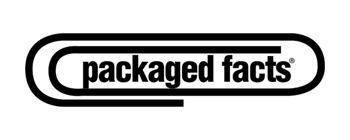 You can tell a lot by a company’s logo.
You can tell a lot by a company’s logo.
Especially in hindsight.
When we acquired the market research publisher Packaged Facts 20 years ago the logo was a paperclip.
Which was fitting, as was its name, since the company started out as a packager of facts, probably delivered in a stack of paper bound by a clip?
But the evolution of how market research is produced and the changing customer expectations is more dramatic than going from a paperclip to a paperless click.
In the early days companies were trying to determine what the masses wanted, they needed facts and figures to determine: Just how big is the market?
The industry evolved from an analysis of the market into a dissection of the individual.
There was a further shift to understand not only the heart but the head, as companies worked to decipher how we make decisions: Why does someone choose Almond milk over dairy?
And now publishers are trying to tackle it: How big is the market? What appeals to the consumer’s emotion? How do they make choices? And more recently, how does context affect how these decisions are made?
Numbers are everywhere.
The World Wide Web has brought numbers out of the darkness, so that most customers say they are “drowning in numbers.” The questions now center on: Are the numbers right? And what do they mean?
“Omnichannel is the name of the game,” one analyst told me. “Not coincidentally, the distinction between products and services has broken down, such that customers expect interactive, customization, and perhaps even consulting services to be baked into the market research they purchase. The market has gone from ‘packaged facts’ to ‘answer my questions, my way.’”
Paradoxically, at the same time market research end users are often less experienced in knowing the right questions to ask, or in evaluating the quality of the information they receive. Some market research suppliers are good at exploiting that lack of perspective to make quick one-off sales, to the detriment of the overall health of the market research industry, which relies on substantive, productive and longer-term supplier/client partnerships.
One publisher noted that for them “the numbers are still king but the change is that top line/big picture numbers aren’t enough. They want data drilled down deeper and deeper with more segmentation. They see statistics coming out of sports with analytics for every minute of a game and they want that for their product or market.”
But so many new entrants into market analysis lack the ability to give context around a product you might buy in a grocery store, when they’ve never been in a store like it? How can they talk about an industry they’ve never worked in, never spoken to a market insider, never held the product in their hands, let alone used it?
“How can you analyze a market without having a history of covering it,” one analyst noted. “If you don’t have perspective how can you tell if today’s ‘big product launch’ is a highly disruptive event or just a corporate push that’s long on marketing but short on innovation?”
And so the ways in which market research reports are created has evolved.
“Anyone can take a grouping of numbers and try to put a narrative around it, but it will come out sounding like a high school research paper,” one editor said. “Twenty years ago you pulled together detailed and relatively accurate government data, read the key trade journals, and that was enough to satisfy customer needs. That methodology is no longer viable. Budget cuts have reduced the availability and quality of government data. And the internet has replaced trade journals with a barrage of information that is often incorrect or outdated. New more sophisticated approaches are needed.”
But too many entrants into syndicated market research have resorted to tactics that are 20 years old, packaging together disparate facts in an attempt at SEO optimization and grabbing the fleeting attention of an online searcher. They are trying to get their attention just long enough to sell them a report that is about as helpful as 20 year old numbers.
As one long-time publisher noted, “It doesn’t take too long to determine that a publisher has grouped terms together for maximum internet searching advantage, but they are not the vocabulary used by those in the industry, and/or they are not market segments average industry participants would expect to see grouped together.”
With the explosion of new “publishers” of market research, sometimes what the user needs and what the “publisher” creates are 20 years apart.
 About the Author
About the Author
Robert Granader is the Founder and CEO of MarketResearch.com, a leading provider of global market intelligence products and services.

